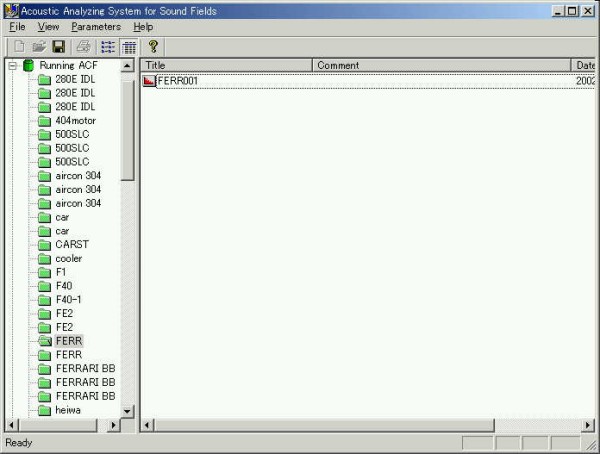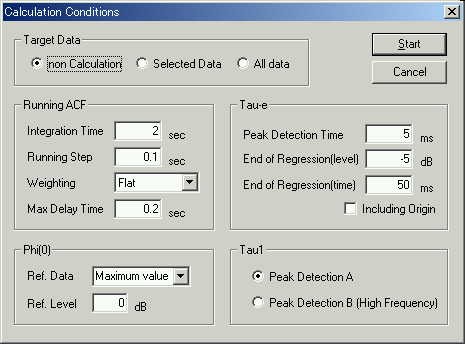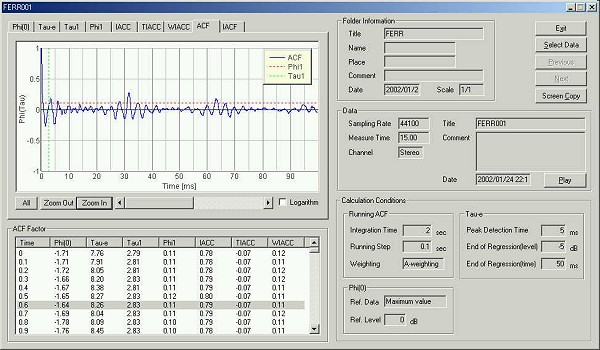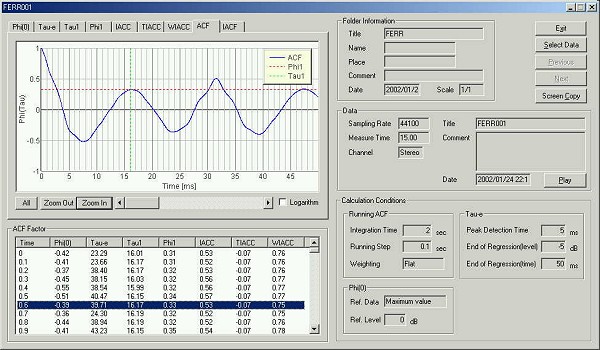| Japanese | English |
Our ears have a specific frequency sensitivity curve. The most sensitive frequency is around 1-4 kHz, and the sensitivity decreases rapidly at low and high range. In the sound measurement, it is common to mimic this sensitivity curve by using the A-weighting filter (see this page for a brief description).
It can be said that our ears cut out the unnecessary sounds, so that only the required information such as language and music can be acquired. To take this into consideration, the running ACF has been analyzed using the A-weighting filter in the previous reports. This time, the same sound is analyzed including humanís insensitive domain by using the FLAT setting for the frequency weighting.
![]() ferrari1.wav (44.1kHz / Stereo / 15sec / 2.52MB)
ferrari1.wav (44.1kHz / Stereo / 15sec / 2.52MB)
As is previous, data is calculated by SA (sound analyzer).

The calculation conditions window

Previous result (car1.htm): The ACF waveform measured with the A-weighting filter.

Analyzed with the FLAT setting
Now the low frequency component is not cut out. The effect of this low frequency
is prominent in the ACF waveform. The representative frequency around 300 Hz (3
ms peak in the ACF) cannot be seen. Instead, the first peak is found at 16.17
ms. It corresponds to the fundamental frequency of 61.8 Hz. Multiplying 15 to this for
a rapid calculation, the number
of rotations of this engine is 927 rpm. This value agrees with the first
measurement from the spectrum. It seems that the Flat setting is important
for measuring the rotation speed of engines.

August 2002 by M.Sakurai